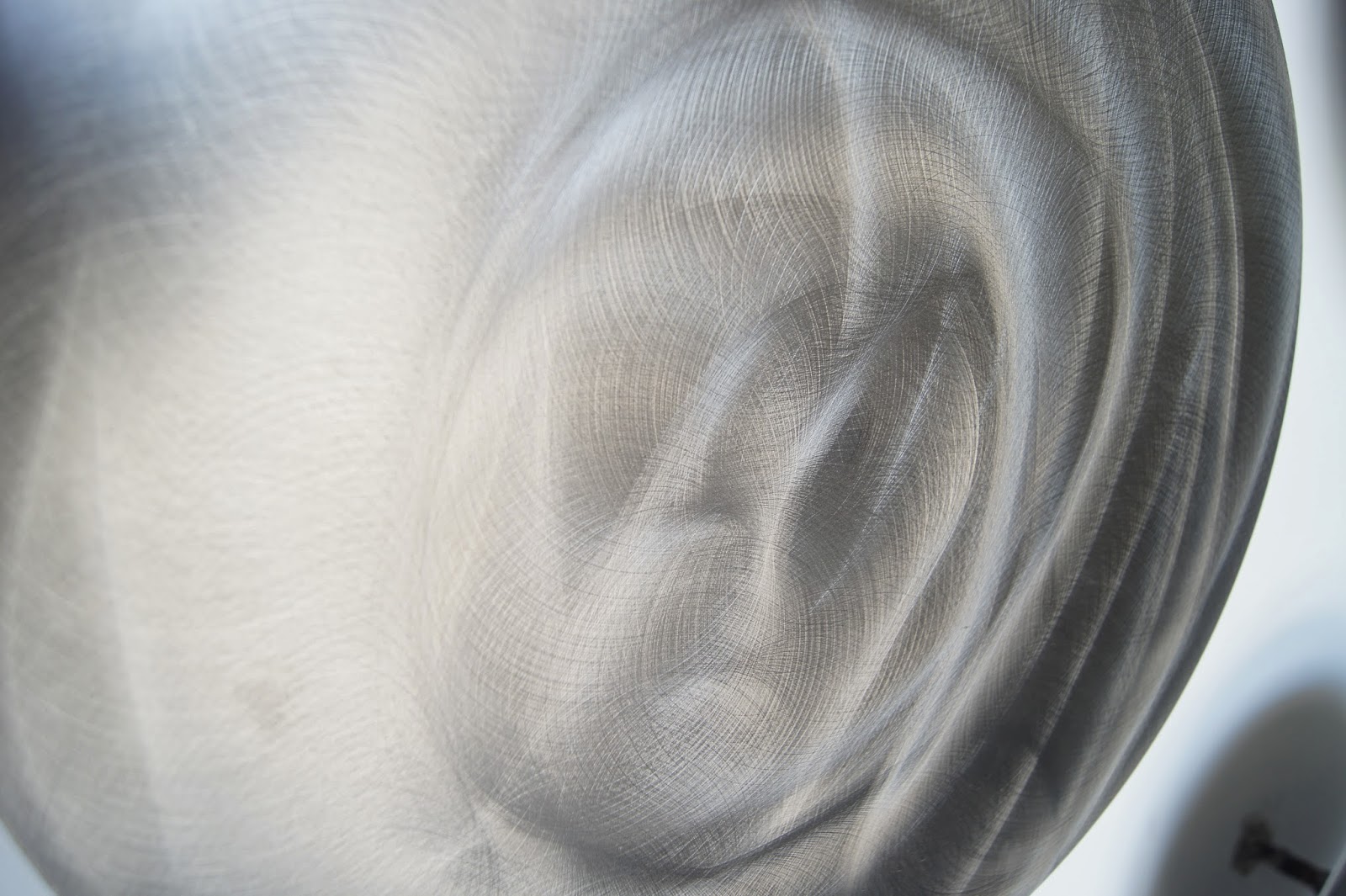GUAGNO, Puglia, Italy---Entering the winery Tenute di Emera one would appear to be entering a spac emore like Terra Museum or a private art museum than a winery. The outer courtyard is dominated by a huge outdoor sculpture complete with an inscription from Homer's The Illiad. The interior is filled with artifacts witnessing the founding of the region by Greece and its indelible imprint in the planting of the first wine grapes, which came to be known as Negroamaro, the wine varietal exclusive to Puglia.
The wine tasting room is dominated by a free-hand mural created by the artist Ercole Pignatelli. Emera's winemaster, Claudio Quarta, has been recognized by Gambero Rosso, the Italian culinay institute and media conglomerate for his oontributions to the scientific advancement of viticulture.
The sculpture garden at Tenute di Emera
The winery's award-winning "Wall of Respect" reflecting its Gambero Rosso honor of 2013
Polish online wine journalist Marta Wrzesniewska in the aging cellar which is an integral part of the art gallery
Alessandra Quarta the Marketing and Exports Manager
The mural in the tasting room by the artist Ercole Pignatelli
Tenute di Emera began in 2003 when Claudio Quarta bought an estate near Pulsano, the homeland of the indigenous varietal Primitivo di Manduria.Utilizing the superb vineyards along the idyllic Salento Ionian coast, he began to make wines of distinction.Using the existing 16th century "masseria," or farmhouse, he created a unique winemaking facility that combined the latest in technology with the winery's architectural and farming history. On the cutting edge of viticulture, the winery is in the midst of an ambitious project to recoup ancient and extinct varieties of grapes, and to compare different vines. Currently, the winery and its vineyards are home to 500 grape varieties from around the world.
Scenes at Tenute di Emera
Alessandra Quarta with Dwight The Wine Doctor
The wines of Tehute di Emera:
Anima di Primitivo-$13
Manduria is the spiritual home of Primitivo, even if it is thought to have originated somewhere near Croatia and may, in fact, be the same grape varietal, or, at least the kissing cousin of California Zinfandl. Called "primitivo" because it is the first (prime) grape to ripen in the harvest cycle (as is Tempranillo), ths is the most widely planted grape in southeastern Italy. Puglia is located in "the heel of the boot", where Primitivo is its most planted grape. Here, this inky, tannic wine finds its expression in a medium bodied wine, Ruby-red in color, with the fragrance of crushed red roses, and flavors of Bing cherries, licorice and plums. Long nd intense on the palate, it can be served slightly chilled. Its right at home with barbecue and grilled meats and loves slow-cooked meats, hams and other cured meats.
Emera Rose Lizzano Negroamaro Rosato=$12
Negroamaro has been grown in this region for hundreds of years, but it was only in 1988 that the DOC, from which it comes, was created. This medium textured wine is created from hand-picked grapes that are allowed to macerate on the skins while being gently pressed, thus giving the wine its bright, coral highlights. Floral notes, Meyer lemon, a hint of Mandarin or Clementine orange and a mouthful of pleasant blueberry and cherry flavors make this a great wine, well-chilled, with fish. The long finish simply cries for fresh Salmon!
A blend of grapes grown in Salento, including the native grapes Negroamaro and Primitivo, combined with the international varieties of Merlot, Shiraz and Cabernet, this is a big red wine with intense Ruby color and juicy red fruit flavors of black plums and currants. There's a hint of vanlla and cinnamon baking spice, but no wood was used in the aging of this wine. It's all wrapped in stainless steel from start to finish, so what you're tasting all comes from the fruit. A touch of sage and oregano gives the wine complexity and balance. Its best with aged cheeses and a really good piece of steak or herb encrusted lamb.


















No comments:
Post a Comment